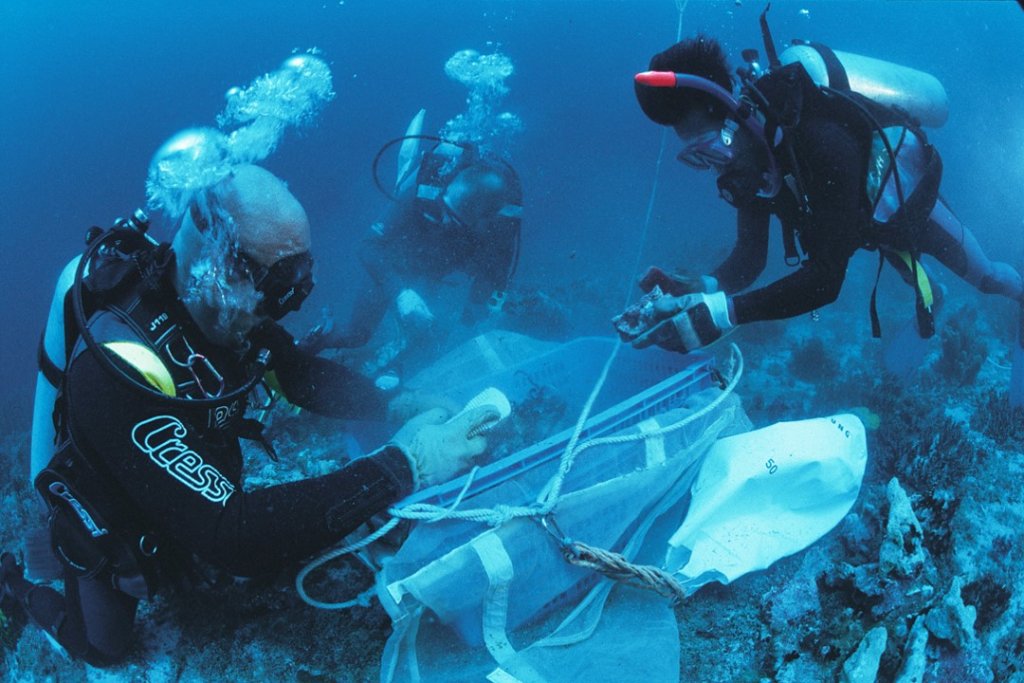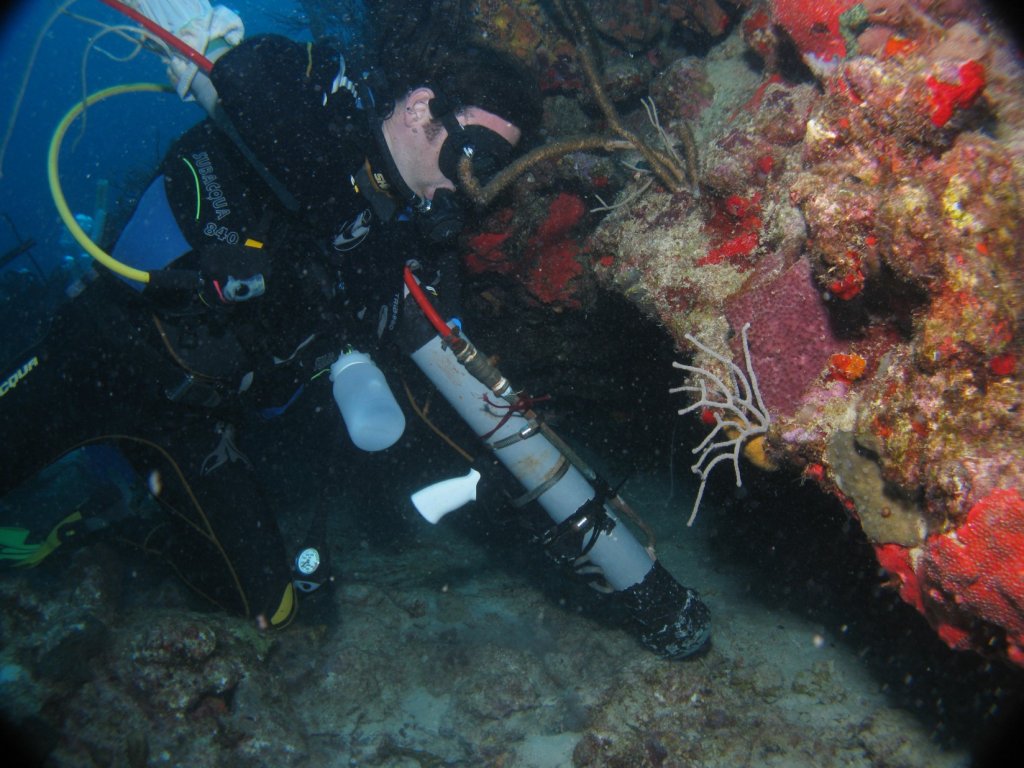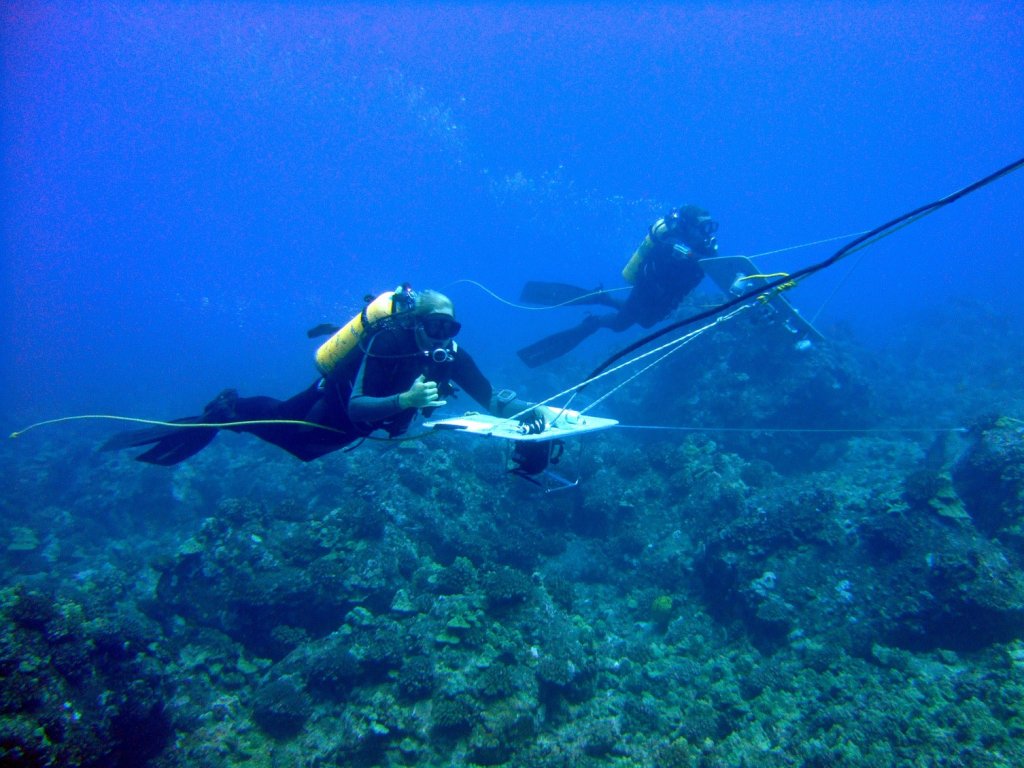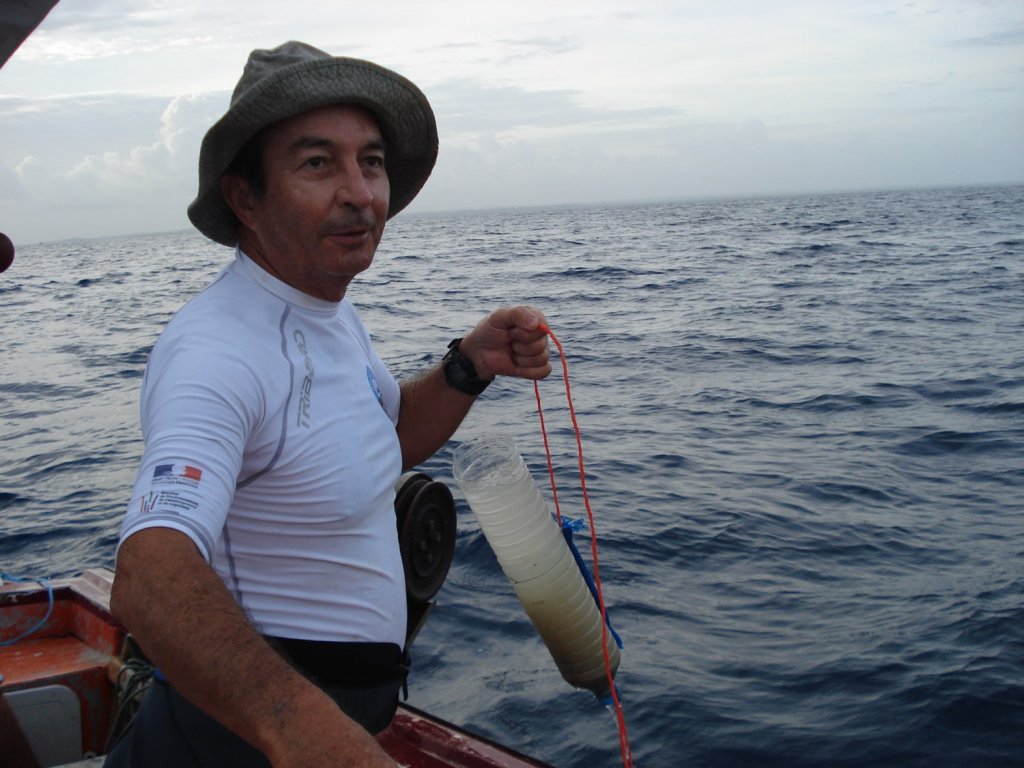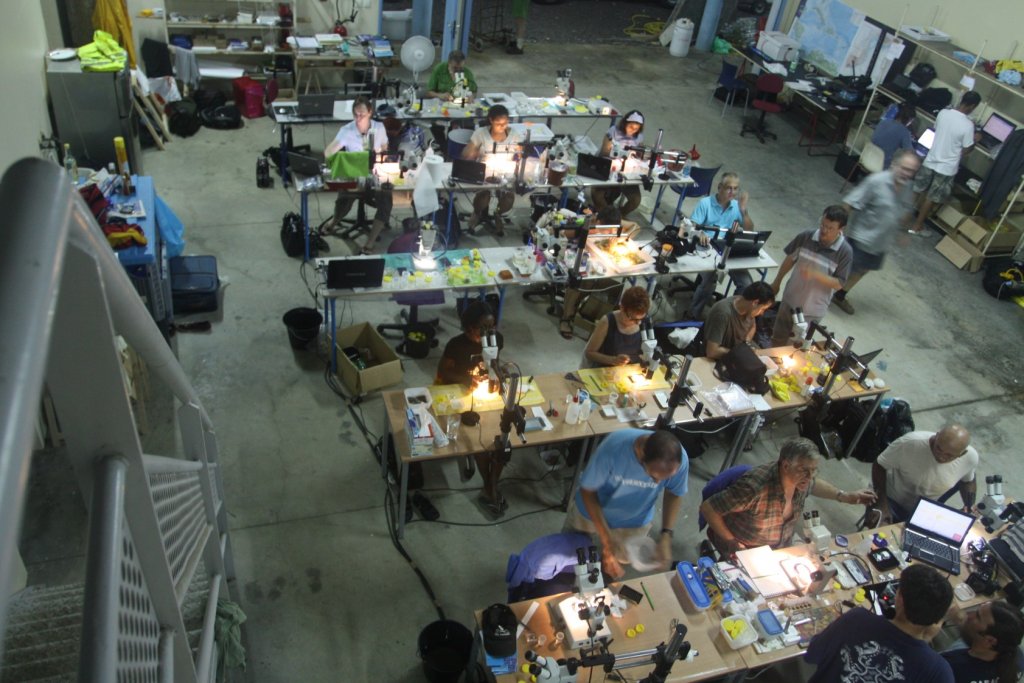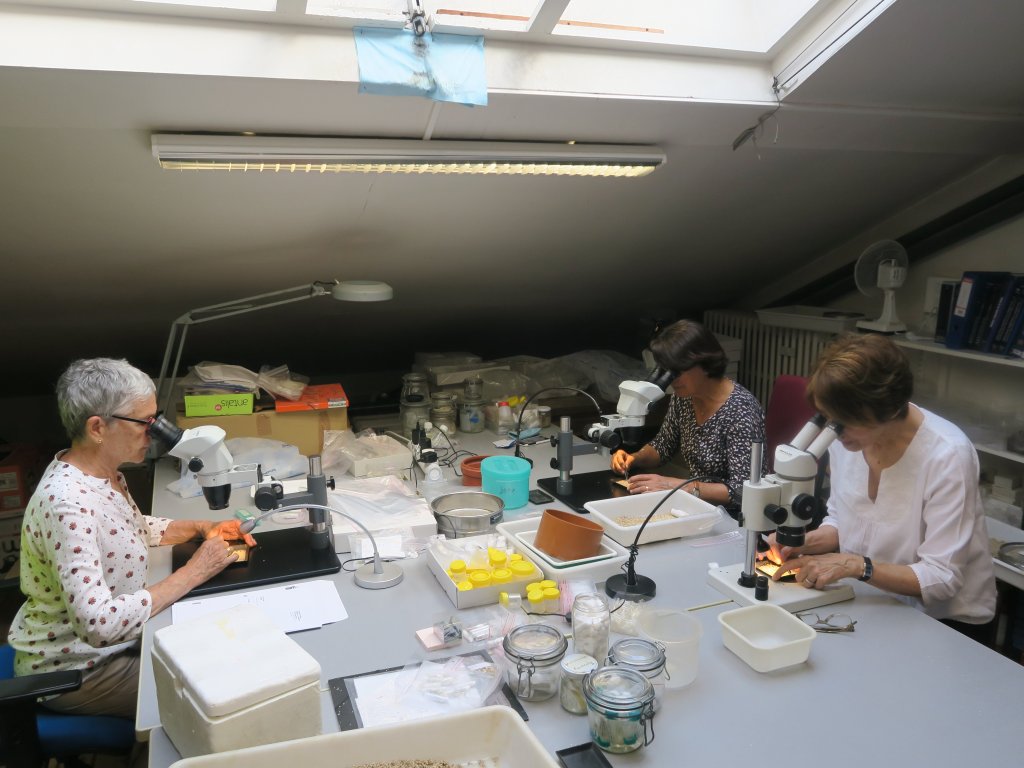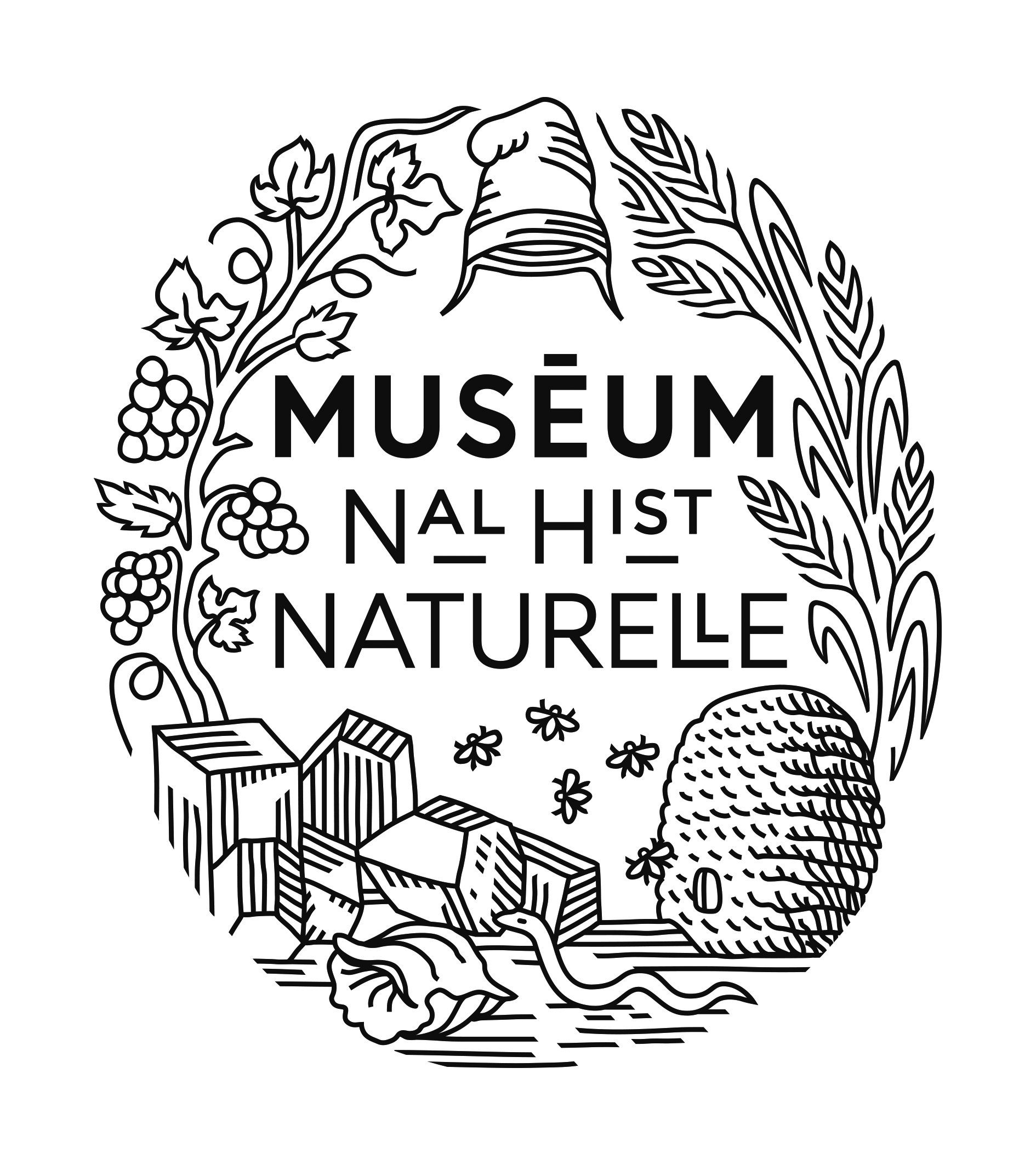Objectives
Amateurs who are taxonomy experts contribute in different ways to great expeditions by collecting specimens if the wildlife can be harvested by hand or by diving, by sorting specimens or by describing new shellfish species.
Specific actions
Help build knowledge on biodiversity in the marine environment;
- Collect specimens by diving or by harvesting them by hand following a specific protocol;
- Sort and pack harvested specimens in different taxonomic groups;
- Describe new species.

 Project created
Project created
 Open sea
Open sea
ou littoral
Type of project : Field
Participation period : Depends on the expedition schedule
Level of involvement : Case by case
Project description
The oceanographic campaigns of the Tropical Deep-Sea Benthos program (https://expeditions.mnhn.fr/program/tropicaldeep-seabenthos) and Planète Revisitée (http://www.laplaneterevisitee.org/fr) are among the great expeditions organized by the Muséum national d’histoire naturelle. Thousands of marine wildlife specimens are collected in the open ocean or along coastlines during these exploration campaigns, which primarily concern the Indo-Pacific and Caribbean. The Tropical Deep-Sea Benthos program campaigns mainly explore the upper part of the continental deep-sea zone at a depth of 100 to 2000 meters. Because the wildlife in this area is difficult to access, the campaigns are carried out on board research vessels equipped with trawls and dredges to allow researchers to collect specimens. For this type of campaign, experienced amateurs are involved in post-campaign sorting and those with specific expertise may be tasked with describing new shellfish taxa.
Some campaigns such as the marine component of Santo 2006 also explore shallower marine areas, accessible by diving or suitable for hand harvesting. For these campaigns, expert amateurs also take part in collecting specimens and helping to sort the harvested material by taxonomic group.
The contribution of this network of expert amateurs is very valuable for the shellfish group. It is crucial for processing the several hundred specimens collected during these major expeditions, the majority of which are still unknown (Bouchet et al., 2006).
Around 4,000 new species have been discovered so far during the oceanographic campaigns of the Tropical Deep-Sea Benthos program, which has been running since 1976. Nearly half of these species are mollusks. Nearly 70% of the mollusk species descriptions have been written with the help of amateur authors.
The contribution of these expert amateurs at different stages has made it possible to create large datasets, which are essential to our understanding of biodiversity in the marine environment
The choice of the term “great expeditions" (grandes expéditions) to describe such oceanographic campaigns emphasizes that, even in the 21st century, our knowledge of biodiversity is very fragmented. Unlike during scientific voyages such as the 19th-century Challenger expedition, our collection methods are more efficient and allow us to collect hundreds of specimens on every expedition, even if some of them, such as dredging and trawling, have not changed much since that period.
All the specimens must be packed in a manner compatible with molecular analysis and sorted by taxonomic group. These steps are important to facilitate collection-making and to prepare for identification or description, if required.
If the specimens can be harvested by hand or by diving, experienced amateurs can also take part in harvesting.
These stages of harvesting, packing, sorting and describing species require various levels of specialized expertise.
Large networks of taxonomists are essential to further our knowledge of biodiversity.
For 40 years since the program began in 1976, the campaigns of the Tropical Deep-Sea Benthos program have sampled nearly 5,000 stations, mainly in the Indo-Pacific. This exploration has led to the discovery of nearly 4,000 new species. To identify and describe these species and other taxa (genus, family, etc.), a network of academic and amateur taxonomists has been set up.
Philippe Bouchet, a malacologist at the Muséum national d’histoire naturelle who has headed up several oceanographic campaign missions, has engaged and worked with many top-level amateurs. These expert amateurs have greatly contributed to advancing our knowledge of the little known, barely accessible universe of the fauna of the upper part of the continental deep-sea zone, which exists at a depth or more than 100 m. While there were no amateurs in the mollusk taxonomist network at the beginning of the Tropical Deep-Sea Benthos program, it now includes around 74 experienced amateurs, who have been producing articles on these specimens since the 1980s.
Several expert amateurs in the network have participated in shallower marine campaigns (such as Madibenthos in 2016). Some have helped identify and sort the specimens and also harvest them, including by laying traps. Expert divers who are not specialist malacologists are often invited to participate in these shallower oceanographic campaigns
The participation
 Training required
Training required
Participants are already trained in taxonomic expertise.
Co-managers
Sophie Bary
Post-Doctorante
Muséum national d’Histoire naturelle (MNHN)
ISYEB, Equipe 3E : Exploration, Espèces et Evolution
Philippe Bouchet
Professeur Malacologiste
Muséum national d’Histoire naturelle (MNHN)
ISYEB , Equipe 3E : Exploration, Espèces et Evolution

Philippe Bouchet
Virginie Héros
Ingénieure d’études
Muséum national d’Histoire naturelle (MNHN)
ISYEB , Equipe 3E : Exploration, Espèces et Evolution

Virginie Héros
Philippe Maestrati
Assistant de conservation
Muséum national d’Histoire naturelle (MNHN)
ISYEB, Equipe 3E : Exploration, Espèces et Evolution


